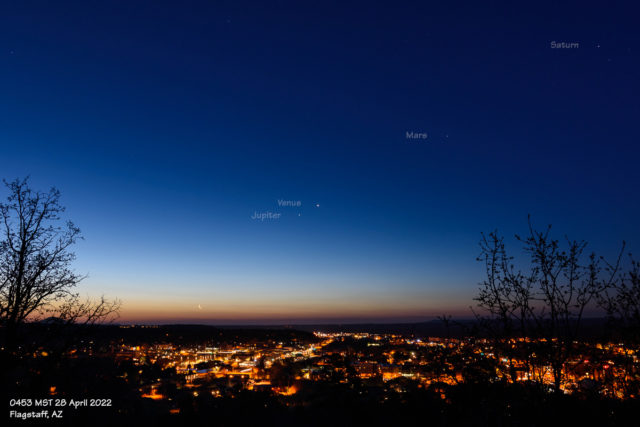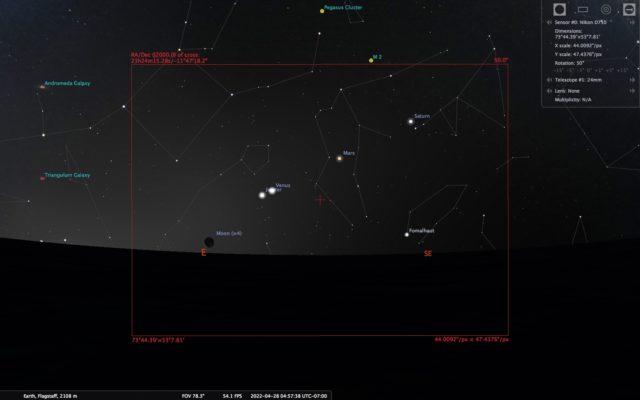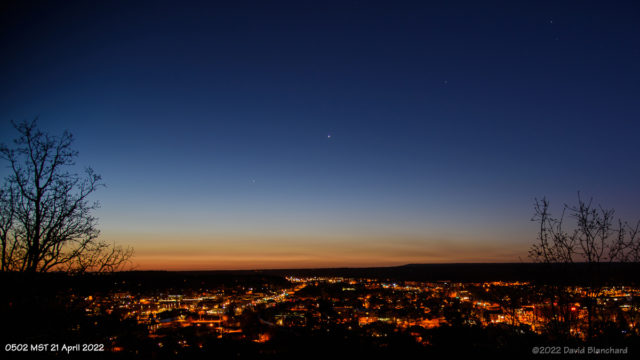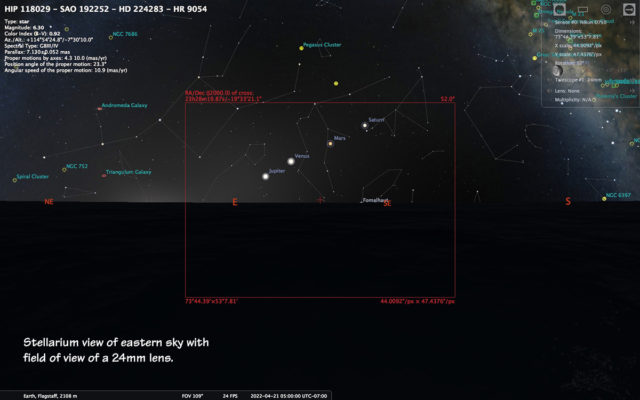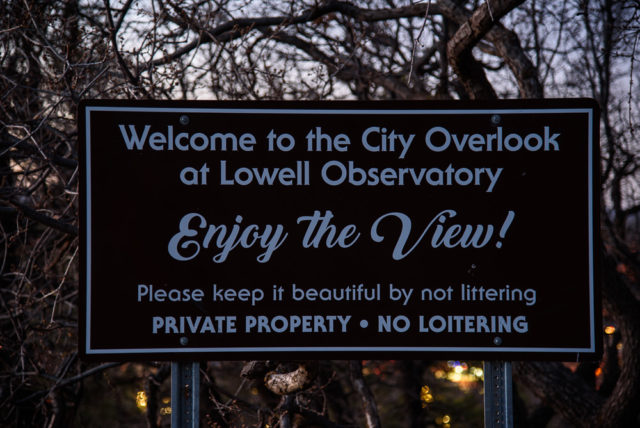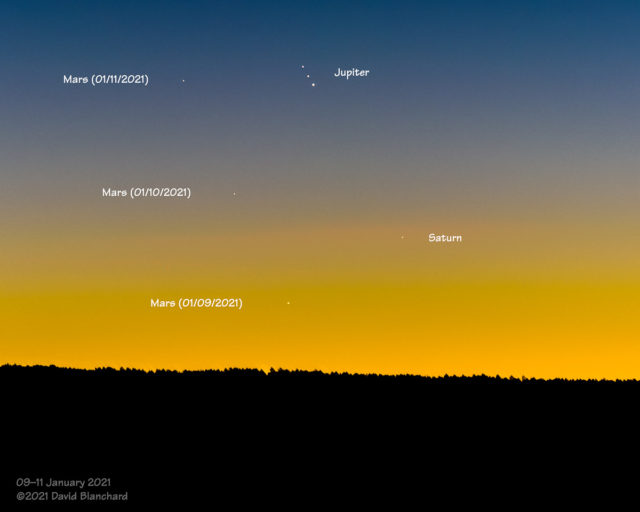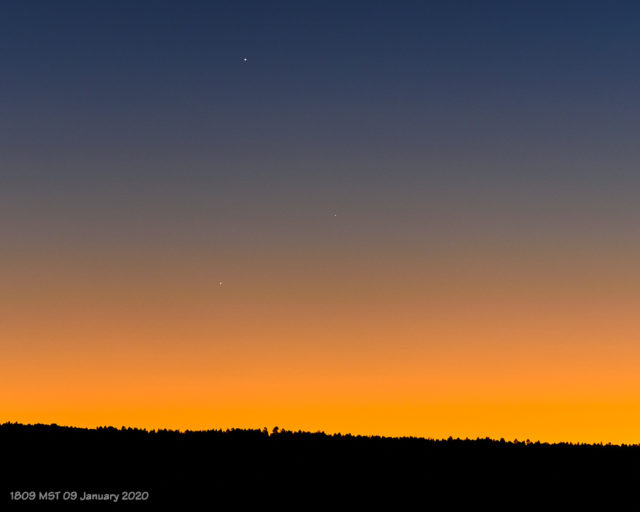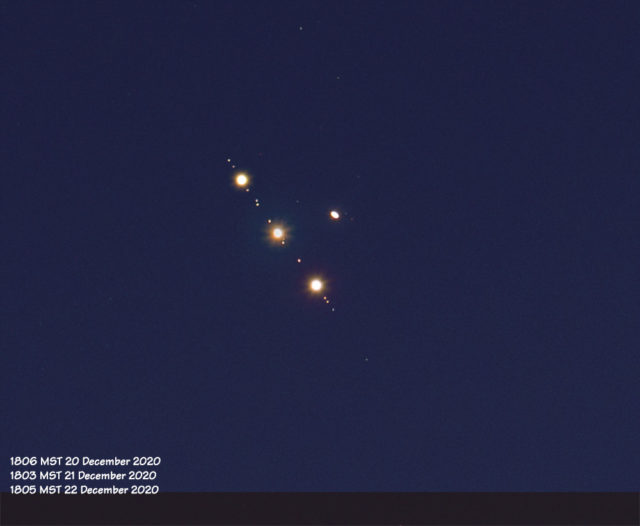The evening sky has provided opportunities in February and early March to view several planets grouped together. In mid February there was an alignment of four planets and one asteroid: Venus, Jupiter, Uranus, Neptune, and Vesta. Only two of these were visible with the unaided eye but even a short exposure on a camera showed the other three objects. Okay…some of them were still hard to see.
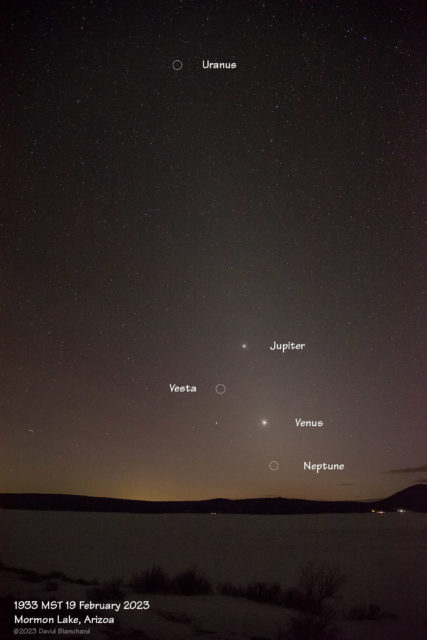
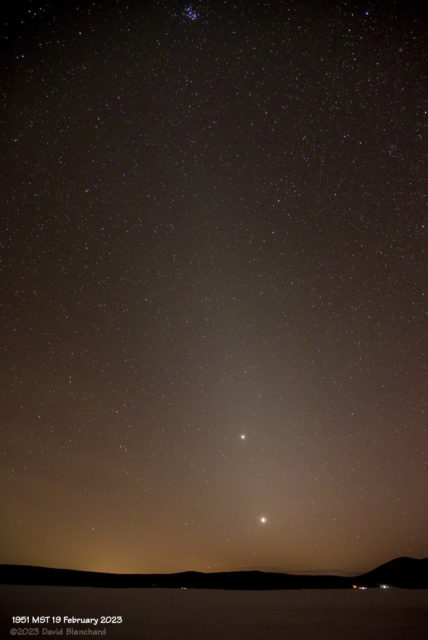
A short time later the Zodiacal Light became prominent along with some faint airglow bands near the horizon.
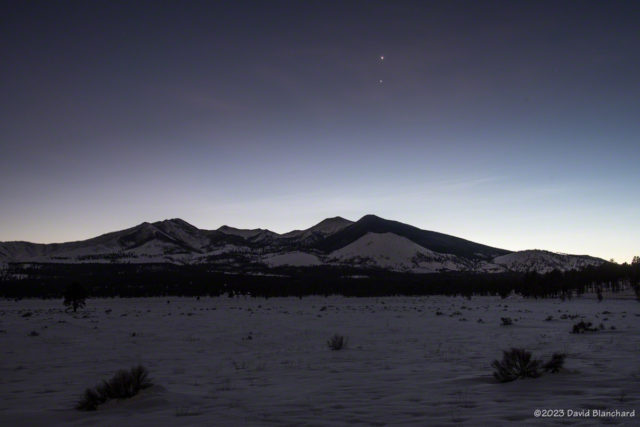
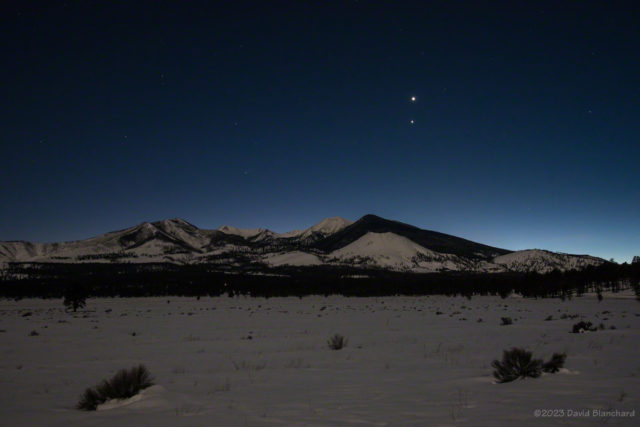
In early March the planets Venus and Jupiter were very near each other in the evening sky. Cloudy skies prevented me from getting photographs at their closest approach but a few days later I was able to capture these images from Bonito Park near Sunset Crater Volcano National Monument.

